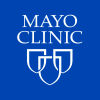预约演示
更新于:2025-05-07

BioSpace, Inc.
更新于:2025-05-07
概览
关联
1
项与 BioSpace, Inc. 相关的临床试验NCT02635958
Validation of the InBody 770® for the Assessment of Body Composition
With, one in three Americans now having a body mass index (BMI) greater than 30, and the fastest growing segment of the population having a BMI greater than 40, it is paramount to conduct validation of approaches to measure body composition. Currently the dual-energy x-ray absorptiometry (iDXA) is the gold standard for measuring the body composition. But it is often difficult to perform since it is limited to specific height, weight and BMI's. InBody is a tool which uses bio electric impedance to measure the body composition. This study will compare both approaches. Validation is necessary as it is clinically quite pertinent to accurately assess a patients' body fat percentage, fat free mass, and total body water and changes that are occurring with nutritional support.
开始日期2015-12-01 |
申办/合作机构  Mayo Clinic Mayo Clinic [+1] |
100 项与 BioSpace, Inc. 相关的临床结果
登录后查看更多信息
0 项与 BioSpace, Inc. 相关的专利(医药)
登录后查看更多信息
3,643
项与 BioSpace, Inc. 相关的新闻(医药)2025-04-25
复苏苗头被泼冷水生物技术在经历了多年投资者撤资的 “寒冬” 后,好不容易开始显露出复苏的“小嫩芽”,可谁能想到,新的关税政策和经济不确定性这两个 “捣蛋鬼”,又跑来给本就脆弱得像 “玻璃娃娃” 一样的市场,带来了新的冲击,这不是雪上加霜嘛!在 2024 年这一整年里,52 周中有 42 周,生物技术领域的资金都是 “净流出” 状态,就好像一个漏水的水桶,水不断往外流。这可是新冠疫情期间生物技术投资热潮之后,该领域连续第二年陷入长期低迷的 “泥沼” 了。如今,宏观层面的不利因素,更是给这个行业压上了一块沉甸甸的 “大石头”。生物技术领域早期风险投资公司阿特拉斯风险投资(Atlas Venture)的合伙人布鲁斯・布斯(Bruce Booth)跟 BioSpace 网站吐槽道:“过去这几个月,生物技术资本市场那叫一个‘刺激’,简直是挑战不断。关税、宏观经济问题、美国食品药品监督管理局(FDA)的动荡、美国国立卫生研究院(NIH)的问题等等,这些麻烦事儿就跟排队似的,一个接着一个。”布斯还补充说:“投资者和企业感觉都没地儿躲了,每天面对的市场波动,就像坐那种让人头晕恶心的过山车,一会儿上一会儿下,太折磨人了。” 不过,他也强调,尽管市场波动这么大,但他对生物技术长期前景的信心,就像一棵深深扎根的大树,纹丝不动。投资者 “跑路”,资金 “大逃亡”失望的投资者们纷纷开启 “撤离模式”,加速从生物技术领域撤资,这导致资金像潮水般从治疗方法研发领域快速流出,这也明晃晃地表明,投资者对该领域近期潜力的信心,就像泄了气的皮球,急剧下降。派珀・桑德勒(Piper Sandler)公司的董事总经理兼高级研究分析师克里斯托弗・雷蒙德(Christopher Raymond)告诉 BioSpace 网站,2024 年,生物技术领域的抛售潮,那场面 “糟糕透顶”,都糟糕到让人觉得可能反而要迎来转机了,就像黑夜到了尽头,黎明或许就要来了。抛售潮,那可是投资者极度悲观的 “标志性事件”,这个时候,资金会跟逃命似的,迅速又持续地从该领域撤离。生命科学加速器 Xontogeny 的首席执行官兼洞察力顾问公司(Perceptive Advisors)投资组合经理克里斯托弗・加拉贝迪安(Christopher Garabedian)解释说,当投资者们集体喊出 “我们不干了”,然后一股脑儿抛售手里的股份,觉得再也没理由给生物技术领域投钱的时候,抛售潮就这么 “轰轰烈烈” 地发生了。从好的方面看,派珀公司的分析师表示,这么大规模的资金流出,往往就像一个信号灯,表明市场低迷期最糟糕的阶段可能已经过去,市场可能正在慢慢接近底部,或者已经触底了,这说不定是要迎来复苏的好兆头呢。然而,这一次,2025 年刚冒头的复苏迹象,就被政治动荡和贸易紧张局势这两片 “乌云” 给遮住了。美国考恩集团(TD Cowen)的分析师在最近一份报告里写道:“随着第一季度结束,生物技术领域投资者的情绪那叫一个低落,沮丧、绝望和无奈的情绪,就像大雾一样,弥漫在整个市场。”抛售潮从哪儿来和其他行业比起来,生物技术领域就像一个特别依赖 “家长”(投资者)支持的孩子,得靠投资者的信心,才能维持漫长又烧钱的治疗方法研发过程。2024 年生物技术领域陷入困境的 “罪魁祸首”,可以追溯到 2021 年末。当时,新冠疫情推动的投资热潮刚过,市场就像一个玩累了的孩子,开始降温了。2022 年和 2023 年,生物技术领域的日子也不好过,首次公开募股(IPO)数量像坐滑梯一样急剧下降,私募融资规模也不断缩水,行业里还掀起了裁员潮,大家都在勒紧裤腰带过日子。安永会计师事务所(EY)专门搞生物技术领域战略规划和资产评估的阿尔达・乌拉尔(Arda Ural)跟 BioSpace 网站说:“疫情期间,因为利率降低,还有非传统资本一股脑儿地涌入,我们看到首次公开募股数量蹭蹭往上涨。然而,这些资产中的大多数,表现都不咋地,没达到最初的定价,交易价格比投资成本还低,就像打折大甩卖一样。”投资银行卡塞尔・萨尔皮特公司(Cassel Salpeter & Co.)的医疗保健业务董事总经理艾拉・莱德曼(Ira Leiderman)也有同感,他说:“生物技术公司要彻底倒闭,还得花不少时间。但过去这几年,我们看到一些公司把资金都耗光了,有些公司只能进行重组,好多公司已经破产了,真是惨兮兮。”派珀公司报告显示,2022 年,生物技术市场的表现,比随后的两年要好那么一丢丢。虽然 2021 年 12 月之后,资金流入速度变慢了,但当年年初资金还是在往这个领域进,而且也没出现特别吓人的恐慌迹象。上涨股票与下跌股票的比例,也就是广度比率,是衡量市场情绪的一个重要指标,这数值越低,就表明市场普遍在下跌。据派珀公司的数据,2022 年 1 月下旬,广度比率是 0.63。可到了 2023 年,市场陷入了更深的衰退 “大坑”,11 月广度比率降到了 0.29。抛售潮也跟着这趋势来。2023 年前 45 周里,有 36 周都出现资金流出,投资者情绪越来越低落。派珀公司评价 2023 年是 “糟糕透顶”,净流出资金高达 160 亿美元,2024 年也没好到哪儿去,净流出 127 亿美元。根据派珀・桑德勒公司的数据,2024 年,压力持续 “在线”,52 周中有 42周生物技术基金都在往外流资金。理柏 / 美国资产管理集团(Lipper/AMG)数据服务公司也得出差不多的结论,显示 2024 年 80% 到 85% 的生物技术投资基金都在往外吐钱。雷蒙德说:“实际上,2023 年和 2024 年这两年,资金一直都是净流出状态。”2024 年广度比率也降了,降到 0.21,他说这可是 “自 2009 年以来的最低水平,比 0.3 这个神奇数字还低”。从历史数据来看,0.3 一直是市场反弹的一个关键节点。加拉贝迪安强调,这一趋势并不一定意味着投资者彻底抛弃了生物技术领域。他跟 BioSpace 网站说,投资者可能只是为了平衡投资组合,拿在其他地方赚的钱来补这儿的损失,才选择撤资,就像拆东墙补西墙一样。事实上,历史经验告诉我们,当广度比率像 2024 年 12 月那样,降到 0.3 以下时,标准普尔生物技术指数(S&P biotech index,即 XBI)在接下来的六个月里,通常会像火箭一样,上涨约 16%。布斯表示,随着 2025 年的到来,派珀公司强调的这一历史模式,就像黑暗中的一束光,给该行业带来了一丝希望。Evaluate 公司的《2025 年展望》报告指出:“2025 年,生物技术领域会继续处于复苏模式,但这可不代表悲观情绪会一直占上风。”然而,政府威胁要实施一系列关税政策,还裁减了大量政府工作人员,其中好多都是高级监管人员,这就让该领域的复苏之路,变得像在迷雾中行走一样,更加不确定了。乌拉尔说:“鉴于现在这环境,我们估计在未来 3 到 6 个月内,首次公开募股市场是不会有转机了,就像被施了定身咒一样。”在风浪中艰难前行尽管市场这么 “折腾人”,布斯对生物技术领域的前景,还是怀揣着希望。他说,虽然目前的市场波动 “让人想吐”,但早期投资者可以把眼光放长远,就像站在山顶看风景,不要只盯着眼前的小沟小坎。布斯跟 BioSpace 网站说:“幸运的是,作为早期风险投资者,我们可以从非常长远的角度看待这个领域。而且我们对该领域未来 5 到 10 年的前景,还是非常乐观的,就像坚信明天太阳一定会升起一样。”不过,他也强调,宏观经济的稳定,对于保持发展势头那可是至关重要的。在罗伯特・F・肯尼迪(Robert F. Kennedy, Jr.)担任卫生与公众服务部部长的监管下,美国食品药品监督管理局和其他机构的动荡,以及唐纳德・特朗普总统持续的关税威胁,这些 “麻烦事儿” 还在对整个行业产生影响,就像阴影一样笼罩着。在这些糟心事出现之前,生物技术领域本来都已经准备好 “大干一场”,迎接复苏了。私人投资开始变强,尤其是对早期公司的投资。硅谷银行(SVB)生命科学与医疗保健部门的董事总经理卡莱・弗兰克(Kale Frank)告诉 BioSpace 网站:“种子轮和 A 轮融资都获得了强劲的投资。” 弗兰克还补充说,2024 年也是有史以来公开募股发行股票规模第二大的年份,这成绩还算不错。随着估值下调,生物技术公司也开始 “精打细算”,采取更精简的运营策略,还优先发展最有前景的资产。加拉贝迪安说,这就是派珀公司数据里凸显出来的“一线希望”。他还说:“现在所有这些因素都在起作用,所以这些公司在筹集资金时,资金能让公司维持运营的时间会更长,就像给汽车加了更多的油。”尽管如此,卡塞尔・萨尔皮特公司的医疗保健业务董事总经理玛格丽・菲施拜因(Margery Fischbein)表示,在这种艰难环境下,只有 “强者” 才能生存下来。她警告说,生物技术领域 “有实力的” 和 “没实力的” 公司之间的差距,正在越拉越大。所以,就算该领域有所回升,“我觉得也不会出现那种大家一起变好的‘水涨船高’的局面” 。参考资料:https://www.biospace.com/business/biotechs-nauseating-roller-coaster-repels-investors识别微信二维码,添加生物制品圈小编,符合条件者即可加入生物制品微信群!请注明:姓名+研究方向!版权声明本公众号所有转载文章系出于传递更多信息之目的,且明确注明来源和作者,不希望被转载的媒体或个人可与我们联系(cbplib@163.com),我们将立即进行删除处理。所有文章仅代表作者观不本站。
医药出海
2025-04-24
iStock,
beast01
The tradipitant saga stretches back to September 2024, when the FDA declined to approve Vanda’s drug in gastroparesis, a stomach condition characterized by delayed gastric emptying.
Vanda Pharmaceuticals
slammed
what it called “FDA bureaucrats” who are “committed” to delaying the biotech’s request for a hearing regarding its gastroparesis drug candidate tradipitant.
What’s more, according to a statement released Wednesday by Vanda, these agency officials are shirking accountability and have instead pointed their fingers at “a new scapegoat,” namely the recent layoffs at the regulator and the newly appointed FDA Commissioner Marty Makary. “FDA bureaucrats have created policies to avoid scrutiny of their decision-making by habitually denying hearings,” Vanda continued.
The tradipitant saga stretches back to September 2024, when the FDA
declined to approve
Vanda’s drug in gastroparesis, a stomach condition characterized by delayed gastric emptying. Patients with gastroparesis suffer from malnutrition, among other complications. Vanda said at the time that the regulator’s decision “generally disregarded” the data, while also criticizing what it called the FDA’s “delayed” action.
In January, the biotech
escalated the matter
to former FDA Commissioner Robert Califf. Vanda partly blamed Califf for cultivating and tolerating a “culture of obfuscation and closemindedness” at the agency. Days later, the FDA
finally provided
an explanation for the rejection: tradipitant “did not demonstrate a statistically significant” treatment effect, among other reasons, and gave Vanda the chance to have its case heard.
Vanda took the opportunity. Through its general counsel, the biotech
told
the FDA that it was expecting a hearing “no later than May 7.” But in a letter earlier this month, the FDA said that it would be able to respond to Vanda’s request “no later than September 12, 2025.” Among the reasons for the extended timeline include the “significant reduction in force” which affected certain officials that had been “assigned to lead the review” of Vanda’s request.
Vanda isn’t buying it. “This cannot be true,” the biotech said, noting Makary’s claims that the staffing cuts did not involve scientists or reviewers.
“It is unfair for CDER and its lawyers to blame the recent reductions in force for their habitual institutional delays on hearing requests,” according to Vanda. “These statements also conceal the extraordinary fact that FDA has denied every hearing request on new drug approvability for at least the past decade.”
In light of these issues, the biotech is asking Makary to “step in and restore adherence to the law at FDA.” It is yet unclear what specific actions Vanda is expecting from Makary.
BioSpace
has reached out to Vanda for comment on the matter.
加速审批
2025-04-24
Getty Images, STR/NurPhoto
The FDA is asking Novavax for a non-mandatory postmarketing commitment to produce additional clinical data for its investigational COVID-19 vaccine.
Novavax believes the application for its COVID-19 vaccine is “
approvable
,” the company announced on Wednesday, citing “conversations” it’s had with the FDA over the last few weeks.
In its press announcement, Novavax revealed that the FDA has issued a formal request, asking the company for a so-called postmarketing commitment to generate “additional clinical data” for the COVID-19 shot.
BioSpace
has reached out to Novavax and will update this story accordingly.
Novavax’s shares surged nearly 20% on Wednesday following the news.
Unlike postmarketing requirements, which companies must comply with after a product approval, postmarketing commitments are
not required
by any statute or regulation. Companies instead have to agree to run these post-approval studies and trials to collect further information on their product and provide better clarity on its safety and efficacy.
Novavax will work to address the FDA’s request “expeditiously” and push the vaccine candidate to approval “as soon as possible,” according to its press release.
Wednesday’s announcement comes after Novavax earlier this month
confirmed
that the FDA had missed its deadline for releasing a verdict on the investigational COVID-19 shot. At the time,
Politico
reported that the agency’s principal deputy commissioner Sara Brenner directly intervened in the review, though the regulator did not provide a justification for her actions.
“We had responded to all of the FDA’s information requests,” Novavax said at the time. “We continue to wait on action from the agency and have not yet received an official decision from the U.S. FDA.”
Though the U.S. has
declared
that the pandemic’s public health emergency over, COVID-19 has been making headlines again, driven in large part by recent policy changes under the leadership of Health and Human Services Secretary Robert F. Kennedy Jr. On Tuesday, for instance,
Politico
reported that Kennedy was
thinking about
removing COVID-19 from the government’s immunization guidelines for kids. This move would align with recommendations from the CDC’s Advisory Committee on Immunization Practices, which met last week.
The HHS, under Kennedy, has also pulled funding for at least two COVID-19 vaccines in development. In February, the Department
issued a stop order
for a multibillion-dollar contract with Vaxart for an oral COVID-19 vaccine. The suspension, which will last for 90 days, will give government reviewers time to assess Vaxart’s data. Earlier this month, the government
similarly froze
funding for GeoVax’s work on a COVID-19 vaccine.
On a broader scale, Kennedy is also
considering sweeping changes
to how the U.S. monitors side effects associated with vaccines. In an event earlier this month, he blasted the current practice, saying that “it’s outrageous that we don’t have a surveillance system that functions,” referring to the Vaccine Adverse Events Reporting System, which has been running since
1990
. Kennedy’s planned changes could include “automated adverse event reporting.”
疫苗紧急使用授权信使RNA
100 项与 BioSpace, Inc. 相关的药物交易
登录后查看更多信息
100 项与 BioSpace, Inc. 相关的转化医学
登录后查看更多信息
组织架构
使用我们的机构树数据加速您的研究。
登录
或

管线布局
2025年12月24日管线快照
无数据报导
登录后保持更新
药物交易
使用我们的药物交易数据加速您的研究。
登录
或

转化医学
使用我们的转化医学数据加速您的研究。
登录
或

营收
使用 Synapse 探索超过 36 万个组织的财务状况。
登录
或

科研基金(NIH)
访问超过 200 万项资助和基金信息,以提升您的研究之旅。
登录
或

投资
深入了解从初创企业到成熟企业的最新公司投资动态。
登录
或

融资
发掘融资趋势以验证和推进您的投资机会。
登录
或

生物医药百科问答
全新生物医药AI Agent 覆盖科研全链路,让突破性发现快人一步
立即开始免费试用!
智慧芽新药情报库是智慧芽专为生命科学人士构建的基于AI的创新药情报平台,助您全方位提升您的研发与决策效率。
立即开始数据试用!
智慧芽新药库数据也通过智慧芽数据服务平台,以API或者数据包形式对外开放,助您更加充分利用智慧芽新药情报信息。
生物序列数据库
生物药研发创新
免费使用
化学结构数据库
小分子化药研发创新
免费使用